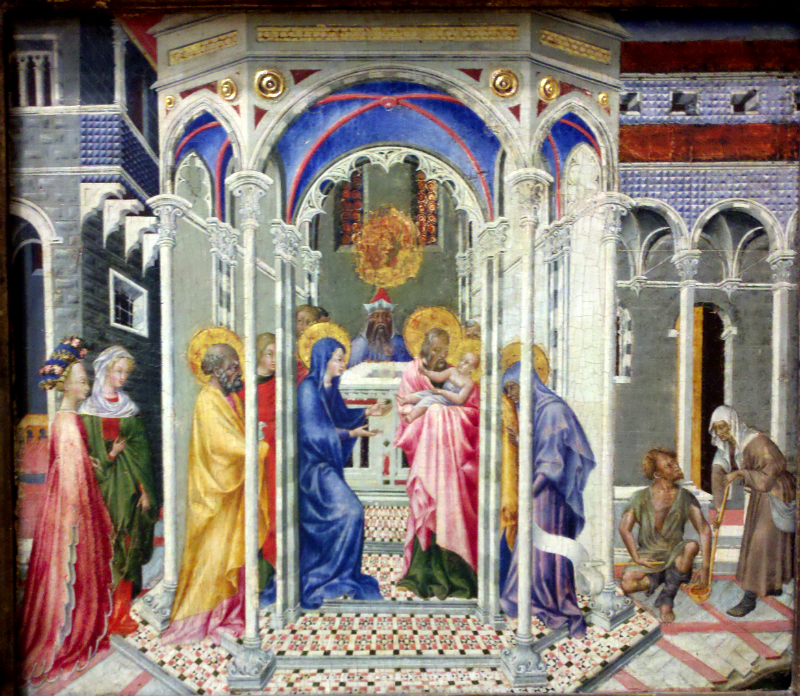The two groups relate to Jesus' remark that the poor widow giving her pennies to the Temple "from her poverty" was actually giving more than others who only gave "from their abundance" (Luke 21:2-4). On the far left we see a sumptuously dressed woman whose hat is trimmed with a veritable garden of real and printed flowers, but who offers only a single sprig of rue. (The rue alludes to Luke 11:42, where Jesus denounces of the Pharisees who "tithe mint and rue and every herb; and pass over judgment, and the charity of God.") On the right, in contrast, we see a model of true charity as a poor woman drops a coin into the basket of a beggar.
The widow in Luke was giving to the Temple, and thus to God, while the old woman here gives to a man. This may seem like a difference until one notes the common trope in medieval legends of a beggar turning out to be Christ or one of his saints. Examples include the vitae of Martin of Tours and Edward the Confessor. The trope is based on Jesus' promise that whatever one gives to "my least brethren" is really giving to him (Matthew 25:40).
Architecturally the represented space is like a medieval church, with a baldaquin in the apse and a cloister on the side, but the Jerusalem Temple is also suggested ‐ by the priest who stands behind the altar in a pointy "Jew's cap," by the Temple veil behind him, and perhaps by the chandelier above, which may be a reference to the candelabrum of Exodus 25:37.
On the left in the gold-colored mantle St. Joseph holds one of the pigeons he will be offering. His hands, like Simeon's, are covered by an edge of his mantle. In the Byzantine court this was the way a gift was given to or taken from the Emperor.
The prophetess Anna stands behind the narrow columns on the right. Like Simeon, she "spoke of him [the child] to all that looked for the redemption of Israel" (Luke 2:38). The artist has put in her left hand the kind of scroll that conventionally carries the words that a person is speaking. The text does not actually say what she said, so the scroll has no words on it.



